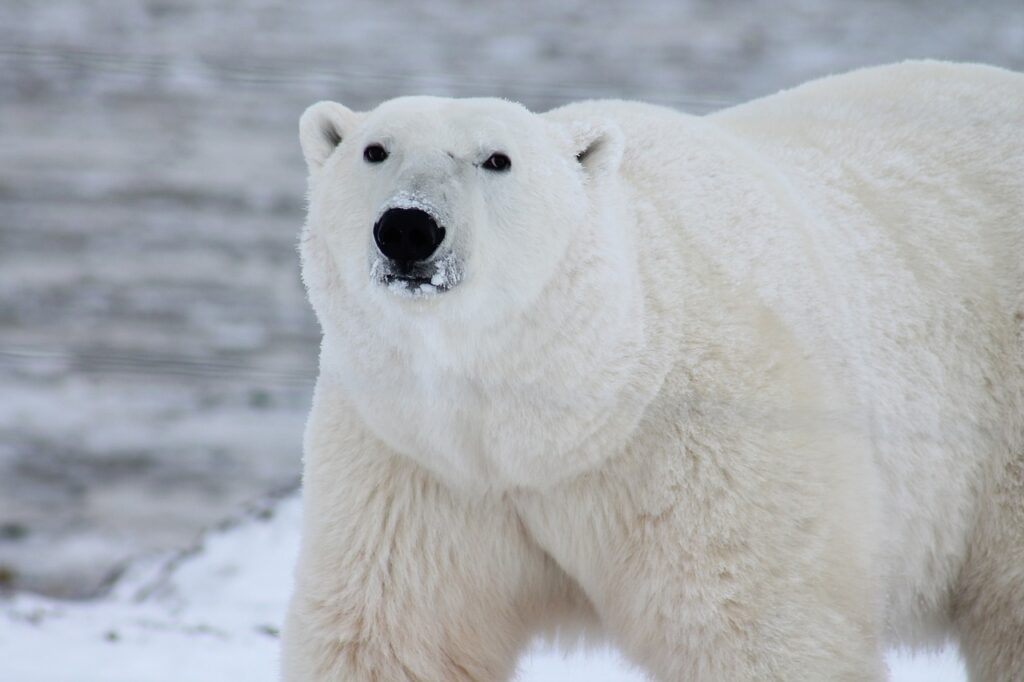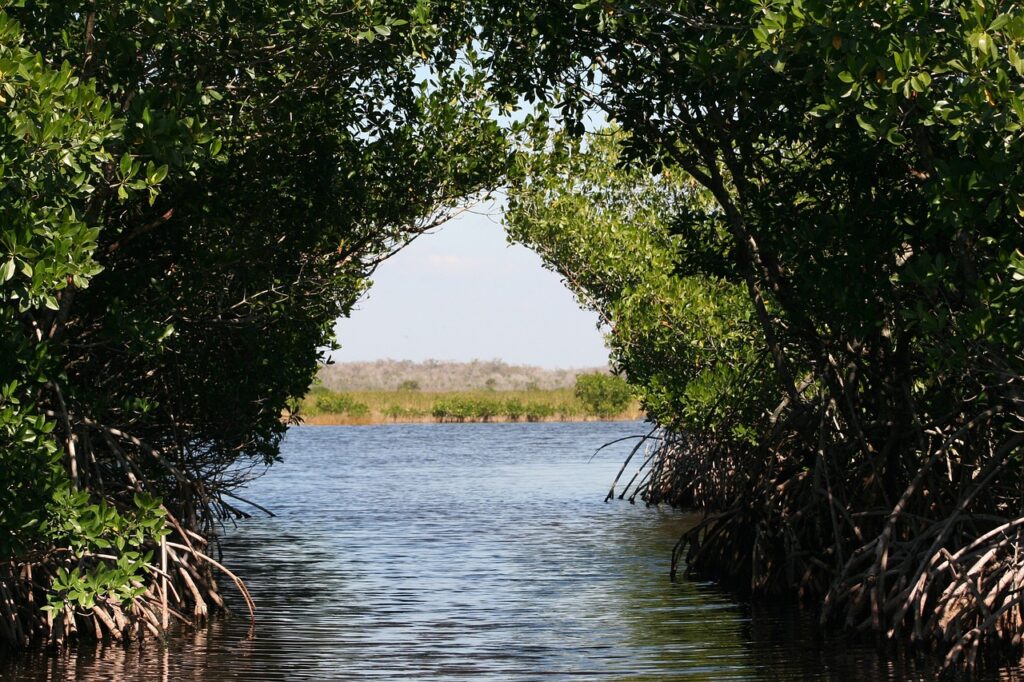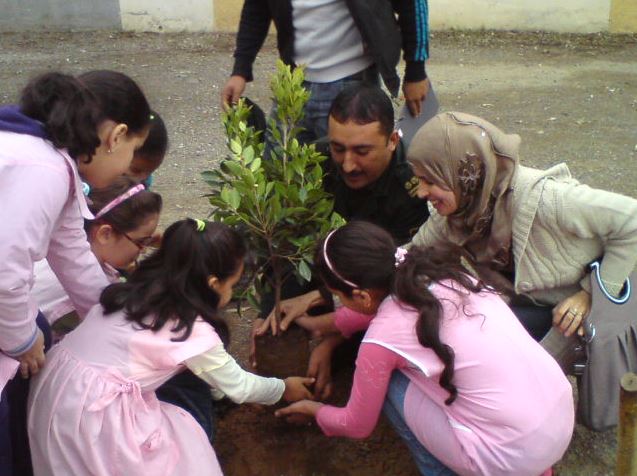Introduction
Around the world, several celebrations and holidays provide special chances to get in touch with nature, spread environmental consciousness, and honour the value and beauty of the natural world. There are a few days each year when we can completely appreciate, enjoy, and bask in the beauty of our planet, our surroundings, and the abundance of life there. These days, various issues hurting the Environment and causing unnecessary suffering to living things are exploited as a platform to create awareness.
Ancient World Festivals Connected to Nature
Some festivals and holidays honour Mother Earth, from greeting the harvest to celebrating new beginnings.
1. Green Man Festival
The Green Man Festival, a music and arts festival honoring nature, folk music, and the arts, takes place on the Glanusk Estate in the Brecon Beacons National Park.
The entire festival experience is skillfully blended into the surroundings. The festival includes installations, workshops, and performances inspired by nature and held in scenic locations. Take in your surroundings as you soak up the sun in the natural amphitheatre that faces the Mountain Stage. The Glanusk Estate is renowned for its trees, which include more than 200 different species and cultivars of Quercus (oak), so be sure to appreciate the beauty of the trees and hug a few of them while enjoying music and arts.
Even though Green Man began as a folk festival, it now features music from all different genres. There are several benefits to thinking about Green Man as a family festival if you have children. You can walk across the little site in 15 minutes, so if someone needs to nap, you’re always close to the tent. Everyone, from the smallest babies to those 12 years old, can enjoy the kids’ field. In a designated “teenage zone,” those between 13 and 17 can participate in DJ workshops, fire displays, filmmaking, and T-shirt design. Additionally, there is a designated family camping area where adults and kids can enjoy and appreciate nature.
Green Man has never sold plastic straws and has always been committed to sustainability. It was the first event in the UK to sell beverages in recycled stack cups and to use bamboo and recycled materials for its programs and lanyards. Compostable restrooms are located around the event grounds, and any camping supplies left behind are recycled or donated to refugee organizations. Although campers can bring their food and beverages, one of the best things about Green Man is the abundance of fantastic options available nearby. Vegetarians and vegans have several options for food, including vegan sushi.
2. Tu BiShvat or Jewish Arbor Day
Jewish Arbor Day is known as Tu BiShvat, often called the “New Year of the Trees”. This festival is celebrated every fifteenth day of the Hebrew month of Shvat. Tu BiShvat was thought to have begun as an agricultural celebration to celebrate the coming of spring. Many Jews today observe a contemporary Tu BiShvat seder every year. In Israel, the holiday has also evolved into a tree-planting celebration where Jews from all over the world plant trees in remembrance or honour of friends and family.
Few Jews still observe the kabbalistic Tu Bishvat seder. Still, many Jews in America and Europe observe Tu Bishvat by giving money to the Jewish National Fund, which supports Israel’s reforestation efforts. According to environmentalists, Tu Bishvat is a historic and genuine Jewish “Earth Day” that informs Jews about the Jewish tradition’s support for ecological engagement as responsible stewardship of God’s creation. Among them, modern iterations of the Tu Bishvat seder emphasizing green issues are becoming increasingly well-liked.
3. Festival of Hakka Tung Blossoms
The Hakka Tung Blossom Festival, which takes place in Taiwan’s Miaoli County, honours the blossoming of tung trees, which yield palatable tung nuts. The event emphasizes the relationship between Environment, culture, and customs through cultural performances, lantern displays, and pursuits like oil pressing and tung nut gathering. Tung trees, or oil trees, were imported from China during Japanese control and were once grown as a cash crop. They survived and thrived in the mountainous regions where the Hakka people lived. Because of their commercial importance, locals in Taiwan grew them on a large scale. Despite the toxic nature of the Tung tree’s fruits, making them unfit for human consumption, the oil from the fruits can create a weatherproof paint. Additionally, the wood was used to create toothpicks, matchsticks, Japanese geta footwear, furniture, and many other items. The Hakka communities all around Taiwan benefited from this very extraordinary crop.
Even though Tung oil output is declining, Hakkas owe their existence to the Tung tree. In Hakka villages, some residents still feel grateful for nature’s gifts. The Hakka Affairs Council has approved the Tung blossom to represent Hakka identity and vitality to preserve the Hakka spirit. The Tung Blossom Festival is more than just a seasonal event; it also mixes cultural and ecotourism. From April to May, the breathtaking image of snow-white Tung flowers covering Taiwanese mountaintops is romanticized as the “snow of April.” Visiting Hakka villages for sightseeing and bloom gazing during the festival is unquestionably necessary. Several concerts and performances round out the celebration as well.
4. Yunsa or Corta Montes
This Andean and Amazonian holiday, Corta Montes, celebrates the beginning of fresh life. The tiny tree covered in presents serves as the centrepiece of the celebration place. Before attempting to bring down the tree with an axe meant to represent a new beginning, pairs take turns dancing around it. Then, following long-standing ecological preservation practices, a fresh seedling is planted in the place of the fallen tree. It is a custom that bridges the Andean and African cultures.
Although it is now commonly termed the guns, which refers to a shift in time, initially, it was known as the corta montes, “wild grass cutter,” because it signals a fresh crop. The festival honours the fresh harvest and the rebirth of life. This celebration has ecological relevance since it celebrates the bond between people and nature and encourages the preservation of local trees. The junta tree is typically placed where it can flourish and supply the neighbourhood with shade, fruits, or timber.
5. Nicaraguan Palo de Mayo
The Palo de Mayo is a celebration which honours Mayaya. This African fertility goddess begins in Nicaragua with a fusion of Caribbean rhythms and vibrant troupes. The celebration, known as the best representation of culture and tradition in the Nicaraguan Caribbean, begins on May 1 with the display of a decorated tree encircled by dancers and decorated with colourful ribbons. The feast marks the beginning of the rainy season and fresh life.
The festival is known as Palo de Mayo because the tree was felled in May and has a long trunk with no branches or foliage, making it ideal for dances around it. It is a happy rite with music and dancing, with the tree as the circle’s focal axis. The tree’s fruits and vibrant ribbons symbolize femininity, while the trunk strongly references masculinity. As a festival, it is vibrant with flowers, fruits, sweets, and the movements of boys, girls, and men and women. In essence, individuals of all ages participate in a group dance with deep meaning.
The Palo de Mayo custom has spread to other continents. Still, its meaning has remained the same: people get together to praise the soil, celebrate fertility, and usher in the harvest. Many of the traditions have changed throughout time. Almost the whole Caribbean Coast, as well as some Pacific communities, observe Palo de Mayo. The inhabitants of the Caribbean dance as they express gratitude to nature for the first raindrops and the harvest.
The Present Holidays that Honor Nature
Nature-related holidays are intended to increase public awareness concerning issues affecting Mother Earth. Through suitable individual and group efforts, these events are meant to aid in restoring nature by educating everyone about these holidays and encouraging them to participate in the many activities offered. These promote the long-term sustainability of the Earth and allow nature to heal.
1. International Polar Bear Day

Concerns about polar bears and ways to lessen human carbon impact are brought up on February 27 as part of International Polar Bear Day. People must act to safeguard the polar bears’ future since climate change poses a severe threat to their existence. As marine mammals, polar bears are protected from the cold air and water they encounter on the sea ice of the Arctic Ocean by a thick layer of body fat and a water-repellent coat. International Polar Bear Day is a crucial chance for individuals to remember what is at risk in protecting the future of these beautiful beasts, as their home is melting away beneath them.
Scientists have needed help tracing the polar bear’s evolutionary history, but a recent find might offer the solution. Researchers have calculated that the species initially walked the Earth approximately 150,000 years ago thanks to a rare jawbone discovered on a Norwegian island. For thousands of years, indigenous societies have inhabited the Arctic and hunted polar bears, helping to maintain a healthy ecology there. All that changed in the 1700s as hunters from Europe, Russia, and North America gradually decimated polar bear populations. People could capture as many polar bears as they wanted because there were no restrictions, and the species suffered.
Due to the growing use of fossil fuels by the 1950s, things were getting worse. The sea ice was melted by burning coal, oil, and gas, which raised ocean levels and altered the polar bears’ natural habitat’s topography. As a result, environmental organizations started to make more protests and other efforts to defend the Arctic and polar bears. The International Agreement on the Conservation of Polar Bears and Their Habitat was signed in 1973 by the United States, Denmark, Norway, and the former Soviet Union. Polar bears were listed as endangered under the agreement, which controlled commercial hunting. When Polar Bears International (PBI) was founded as a non-profit organization in 1994, they set out to create action plans to safeguard the critically endangered polar bear. Since 2011, International Polar Bear Day has been celebrated every February worldwide.
2. International Day of Forests

In 2012, the United Nations General Assembly proclaimed the International Day of Forests (IDF). The holiday honours and promotes the value of all sorts of forests. On each International Day of Forests, nations are urged to arrange events involving forests and trees, such as tree-planting programs, on a local, national, and international level. The Collaborative Partnership on Forests selects the topic for each International Day of Forests. As part of this environmental awareness day, forests are highlighted as one of the main ways to combat global warming. Every year, forests can absorb 2.6 billion tons of CO2 or about one-third of the CO2 produced by burning fossil fuels. Natural carbon sinks must be preserved so they can assist us in restoring a healthy balance of CO2 in our atmosphere, even though doing so alone won’t stop climate change.
Humans benefit greatly from forests in terms of health. In addition to improving well-being, they clean the air, produce food, combat climate change by capturing carbon, and purify the water. People don’t always think of trees when they drink a bottle of water, write on a notepad, take a fever-relieving medication, or construct a house. However, these and many other facets of human life are somehow connected to forests. Sustainable forest management and resource usage are essential to halting climate change and promoting the wealth and well-being of both present and future generations. Additionally, forests are essential for achieving the Sustainable Development Goals (SDGs) and reducing poverty.
Every year on March 21, people worldwide observe the International Day of Forests to promote awareness of the value of forests to society and their critical role in eradicating poverty, preserving the Environment, and ensuring food security. For the benefit of present and future generations, resolving the problems facing conflict-affected, developing, and developed countries centres on the sustainable management of all types of forests.
3. Earth Day
The annual celebration of Earth Day recognizes the accomplishments of the environmental movement. It promotes the importance of preserving the planet’s natural resources for generations. In the United States, Earth Day is observed on April 22. Elsewhere in the world, it is observed on either April 22 or the day the spring equinox occurs.
Sen. Gaylord Nelson of Wisconsin was motivated by environmental action in the 1960s to organize a national holiday to unite the environmental movement. On April 22, 1970, Nelson organized the first Earth Day with the aid of Harvard University graduate student Denis Hayes, whose goal was to raise awareness of the value of environmental preservation. Twenty million people around the country attended the event, which increased support for laws, including the 1973 Endangered Species Act and the 1970 Clean Air Act.
With more than 200 million participants in more than 140 countries, Hayes organized a global Earth Day in 1990. Today, Earth Day unites activists and individuals worldwide to spread awareness of environmental issues, including global warming and renewable energy sources and to act. The Earth Day Network (EDN) supports the Earth Day objective year-round, which unites more than 20,000 partners and organizations in 190 countries. This objective is based on the idea that everyone has a moral right to a healthy, sustainable environment, regardless of colour, gender, income, or location. The Earth Day Network pursues this goal through action, advocacy, and public policy efforts. Each year, more than 1 billion people participate in these initiatives, making them one of the world’s most significant public, nonreligious events.
4. International Day for Biodiversity
The International Day of Biodiversity is observed on May 22. In addition to the fact that ecosystems give us access to clean water, nutritious food, and even medication, biodiversity is crucial for the world’s sustainability. The International Day of Biodiversity is observed because the UN General Assembly established a set of recommendations to safeguard biodiversity and address activities that endanger it. The Ad Hoc Working Group of Experts on Biological Diversity was established by the United Nations Environment Programme (UNEP) in 1988 to examine whether a Convention on biodiversity was necessary. The United Nations (UN) announced the Convention to be “formally entered into force” on December 29, 1993, following years of work to create rules. The Convention on Biological Diversity (CBD) is the name given to this organization today.
The CBD is an international agreement for preserving biodiversity, the responsible exploitation of its elements, and the fair distribution of the advantages of using genetic resources. The CBD has 196 Parties, and almost all nations participate in it. The Convention aims to address all dangers to ecosystem services and biodiversity. The International Day for Biodiversity (IDB) was formally declared on May 22 by the UN General Assembly in 2000. The day was designated to commemorate the CBD’s founding text’s adoption on May 22, 1992. As part of protected areas and biodiversity hotspots, many portions of the Earth are currently being conserved. By creating scientific reports and tools to aid conservation efforts, the Convention continues to address threats to biodiversity.
5. World Oceans Day
The importance of our oceans and marine ecosystems is highlighted every June 8 on World Oceans Day. At least 50% of the oxygen on the Earth is produced by the ocean, and around a third of the CO2 that we have produced since the Industrial Revolution has also been absorbed by the ocean. One of our most significant natural carbon sinks is the ocean. Still, as the amount of CO2 in the atmosphere rises, the ocean becomes more acidic. In addition to other problems like oil spills or overfishing, this impacts the biodiversity and productivity of marine ecosystems.
The first Oceans Day was officially established on June 8, 1992, in Rio de Janeiro at the Global Forum, a parallel of the United Nations Conference on Environment and Development (UNCED) that gave non-governmental organizations (NGOs) and civil society a platform to discuss environmental issues. The Oceans Institute of Canada’s Ocean Day, the Global Forum- Blue Planet event, which was backed by the Canadian Government and was held on that day, inspired the Declaration. International specialists, opinion leaders, and people who could speak for the oceans’ contributions to maintaining the Blue Planet were featured in the show.
The scope and depth of the Oceans Day celebration had expanded. The wide range of issues raised by the UN Secretary-General in 2008, including the application of the UN Convention on the Law of the Sea, maritime space, international shipping, maritime security, marine science and technology, marine biological diversity, the marine Environment and sustainable development, climate change, and regional and international cooperation, reflect the necessity and scope of this. These sectors would benefit significantly from the increased awareness and action that World Oceans Day would encourage.
6. World Mangrove Day

UNESCO established the International Day for the Conservation of the Mangrove Ecosystem on July 26. Mangroves offer fish nidal habitats, coast protection from erosion, and significant carbon dioxide storage. Nevertheless, more than two-thirds of the world’s mangroves have been lost or degraded despite the numerous benefits that robust mangrove ecosystems deliver. UNESCO wants to inform the public about mangroves and the importance of conservation on this day dedicated to the Environment.
The only tree that can grow in seawater is the mangrove. An uncommon yet magnificent and abundant environment, mangrove forests are typically found along protected coastlines in tropical and subtropical areas. Mangrove forests comprise less than 0.4% of the world’s total forest acreage and less than 1% of all tropical forests. Mangroves face a severe threat of extinction on a global scale. Mangrove loss is mainly caused by exploitation and pollution. Global Mangrove Alliance estimates that 67% of mangroves have already been lost or degraded, and another 1% are lost yearly. Mangroves are decreasing globally between three and five times quicker than forests. Therefore, it is crucial to preserve or safeguard the mangrove habitat.
The Global Mangrove Alliance (GMA) is a group of organizations that have united to support large-scale mangrove conservation, restoration, and sustainable use. By 2030, this alliance aims to double the amount of mangrove cover by bringing together NGOs, local communities, and businesses to combat mangrove deterioration. World Mangrove Day serves as a reminder of how important mangroves are to maintaining ecosystems. Since 2015, various parties, non-governmental organizations, and interested parties have observed this day on July 26 each year with outreach initiatives around the world to raise awareness of the need for international cooperation to protect the mangrove ecosystem and to advance creative solutions for their sustainable management, conservation, and use.
7. International Elephant Day

The international day of the Environment honouring elephants is observed on August 12. Each forest elephant has the potential to boost carbon sequestration by 9,500 metric tons per square kilometre of the rainforest. That is comparable to around the emissions from driving 2,000 gas-powered vehicles every year. To draw attention to the critical predicament of Asian and African elephants, the first World Elephant Day was established. Even though people and cultures worldwide love, respect, and worship the elephant, we are on the verge of losing sight of this majestic animal. Threats to African and Asian elephants include increasing poaching, habitat loss, conflict with people, and mistreatment in captivity.
The objectives that numerous elephant conservation organizations around the world are concentrating on include better protection for wild elephants, improved enforcement policies to prevent the illegal poaching and trade of ivory, conservation of elephant habitats, better treatment for captive elephants, and, when appropriate, reintroducing captive elephants into natural, protected sanctuaries. World Elephant Day encourages you to interact with elephants in sustainable and non-exploitative settings so they can have healthy, happy lives. Express your concern, offer your expertise, and support for ideas for improved care of both captive and wild elephants on August 12—World Elephant Day.
8. Zero Emissions Day or ZeDay
Zero Emissions Day, which takes place on September 21, aims to give the globe a day off from using fossil fuels by drawing attention to the harm that CO2 emissions cause. We must reduce greenhouse gas emissions and eliminate our historical and unavoidable air emissions before this environmental day. It is a common fact that the world has been burning up literally since 1880. July 2017 has been ranked as the second-warmest month on record for the entire planet. The globe is curled up to its toes due to global warming, and one of the leading causes of this sudden transformation is greenhouse gas emissions.
The daily activities of the world’s population result in enormous daily emissions of greenhouse gases such as carbon dioxide, carbon monoxide, nitrous oxide, methane, and fluorinated chemicals into the atmosphere. The rise in greenhouse gas emissions can be attributed to several factors, including excessive power use, fossil fuel emissions, inappropriate handling before disposal of industrial effluents, etc. An extraordinary rise in natural disasters has occurred on the Earth because of global warming, sea level rise, altered weather patterns, and other factors.
In the 1980s, Ken Wallace of Nova Scotia, Canada, had a brilliant idea to counteract the effects of climate change on the Earth: giving our planet an annual holiday. The globe heeded the plea to eliminate all emissions for one day. September 21 has since been known as Zero Emission Day. ZeDay’s concept is straightforward. The use of electricity is minimal, and gasoline, oil, gas, or coal is not used. People worldwide adopted the concept and earnestly tried to cut back on their carbon emissions for one day.
9. World Vegan Day

World Vegan Day, observed annually on November 1, promotes adopting a vegan lifestyle and increases public awareness of animal rights. To mark the 50th anniversary of The Vegan Society’s founding in the UK, British animal rights activist Louise Wallis created the day in 1994. According to vegans, the core of the vegan philosophy is nonviolence and compassion for all of nature’s species. They believe using animals for food, labour, or amusement is exploitative and cruel and should be avoided. For vegans, adopting a vegan diet is a moral and health concern.
Numerous well-known vegans claim that living a vegan lifestyle has numerous advantages for one’s health as well as for the welfare of animals and the Environment. As of 2017, various famous people have publicly supported the vegan lifestyle. World Vegan Day is observed globally with lectures, workshops, exhibits, and public discussions. It is the ideal day for many individuals considering being vegan to learn more about the lifestyle, and it may even be the day they decide to switch. Additionally, it is a day when individuals can promote the vegan way of life and express their opinions to their friends.
10. World Mountain Day
Mountain Day is observed on December 11. Mountains are vital recreational regions with breathtaking views. Still, they are also home to around half of the world’s biodiversity hotspots, and a significant portion of the world’s population relies on them for freshwater. However, this biodiversity is threatened, and freshwater availability is jeopardized as temperatures rise and glaciers continue to melt at an unprecedented rate. International Mountain Day aims to increase public awareness of the value of mountains and sustainable mountain tourism.
Mountains comprise around 27% of the territory on Earth and are home to about 50% of the world’s biodiversity hotspots. They serve as the water towers of the planet, supplying freshwater to almost half of all people. Mountains are home to a remarkable variety of plants and animals and numerous ethnically and culturally varied populations with their customs and languages. Mountains are essential to human lives and livelihoods, including climate regulation, water provisioning services, soil maintenance, and conservation. However, climate change and unsustainable development are harming mountains, increasing threats to humans and the Environment. Water flow is at risk due to climate change, and people who depend on mountain habitats and species are forced to migrate or adapt.
An incentive to restore and preserve mountain landscapes is the recent biodiversity accord of the 2022 United Nations Biodiversity Conference, which promises to safeguard 30% of the Earth’s lands, oceans, coastal areas, and inland waters by 2030. By raising awareness of the importance of mountain ecosystems and urging the adoption of best practices, investments, and solutions based on nature, International Mountain Day 2023 will help mountains better withstand everyday dangers and extreme weather events.
CONCLUSION
Environmental celebrations and global campaigns can inform and compel people to unite to protect the Environment. It all comes down to environmental awareness, educating oneself about imperilled ecosystems, endangered species, and the global efforts being made to protect them. Why not volunteer and participate in a beach clean-up on World Oceans Day? Or could you determine your carbon footprint and reduce it in honour of Zero Emissions Day? Each environmental day can give you a renewed feeling of purpose in the battle against climate change, regardless of how you choose to observe it.
Several international organizations, including the UN, have set aside specific dates to recognize environmental awareness. These dates were chosen to serve as a reminder that environmental protection is just as crucial for the future of humanity as it is for the present. Youth hold the key to the future, and the older generation must protect that future for them. Learn about environmental consciousness in a variety of ways. Understanding the problems and difficulties that affect the Environment only requires a few simple measures. A bright place to start is by attending seminars and studying environmental laws. Reading more about the topic is another approach to learning more about the dangers humans pose to the ecosystem. Protecting the Environment means protecting your future.









